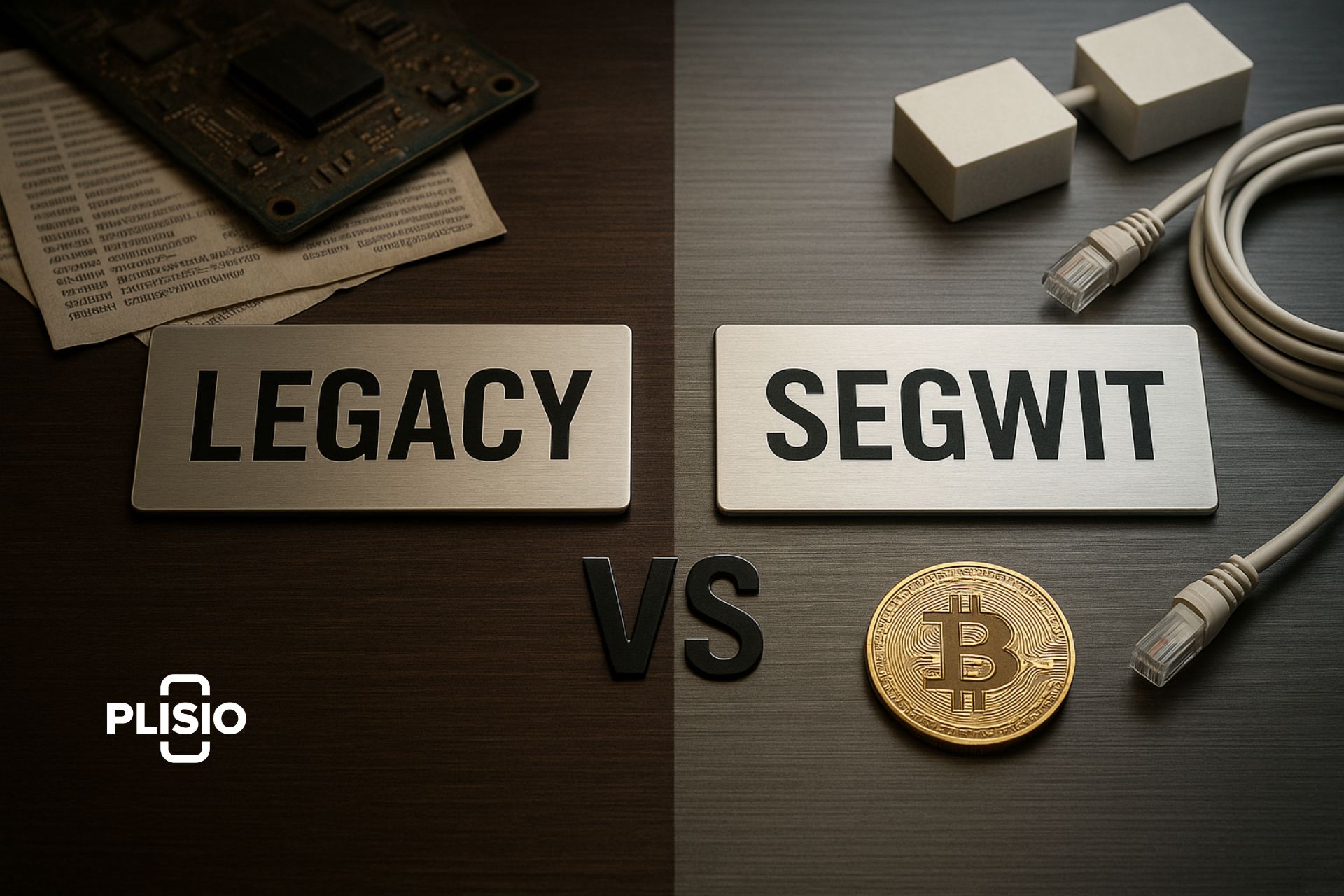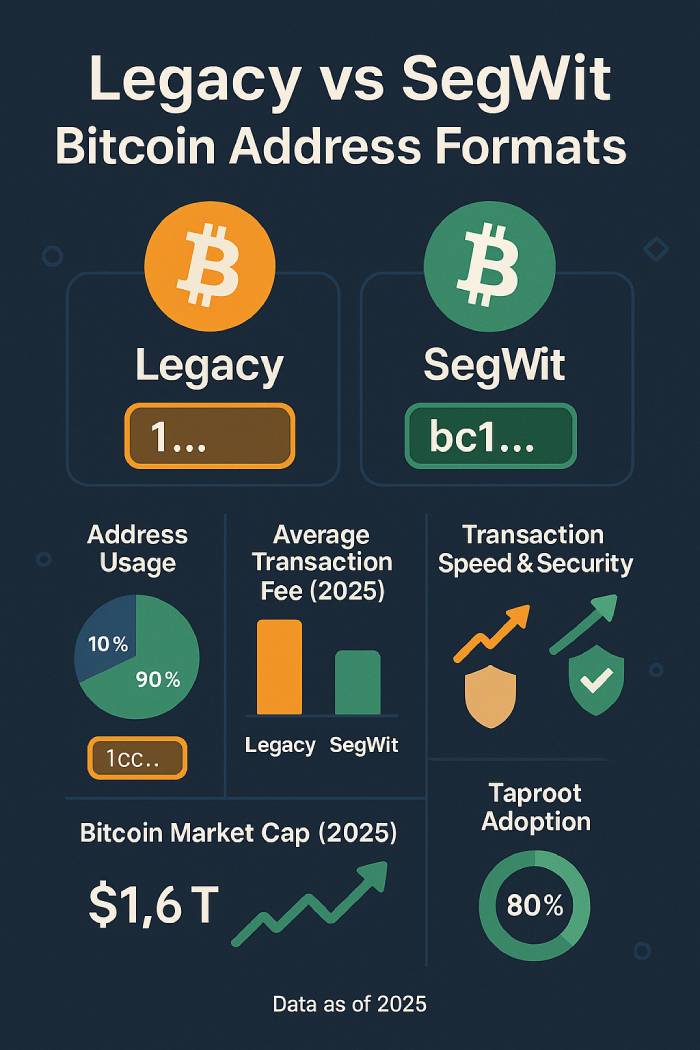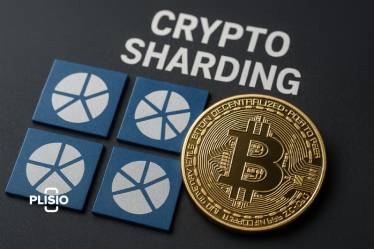Understanding Bitcoin Address Formats: Legacy vs SegWit

The Bitcoin ecosystem in 2025 is stronger than ever, with the global market capitalization surpassing $1.4 trillion and an estimated 200 million Bitcoin users worldwide. Within this expanding network, understanding the Bitcoin address format has become essential. Legacy address and SegWit are two foundational types of Bitcoin addresses that define how transactions are structured, processed, and optimized across the Bitcoin blockchain.
You’ve likely heard about SegWit — short for Segregated Witness — the 2017 upgrade that made the Bitcoin network faster and more cost-efficient. But what exactly changed? And how does it affect your Bitcoin wallet in 2025? This guide breaks down the key Bitcoin address types — Legacy, Nested SegWit, and Native SegWit — to help you choose the best format for sending and receiving Bitcoin in today’s market.
What Is a Bitcoin Address and How Does It Work?
A Bitcoin address is like your digital account number. It allows users to send and receive Bitcoin (BTC) securely through the blockchain. Each Bitcoin wallet generates multiple addresses for privacy and fund management. Every transaction records the sender and receiver using these unique identifiers.
As of 2025, there are more than 1 billion Bitcoin addresses created, with about 70 million active wallets (Glassnode, Chainalysis). Daily Bitcoin transactions now average 550,000 per day, with transaction volume exceeding $15 billion USD daily. This explosive growth highlights the ongoing evolution of different types of Bitcoin addresses, from Legacy to SegWit.

Legacy Address (P2PKH): The Original Bitcoin Address Format
The Legacy address, or P2PKH (Pay to Public Key Hash), is the original Bitcoin address format introduced by Satoshi Nakamoto in 2009. It always starts with the number “1.” Example: 18sp5z1aYXMXGxef1xiPbCYnspcG8eQznh.
Legacy addresses were once the default in all Bitcoin wallets and exchanges, but they are now used for less than 8% of all transactions. They consume more block space, resulting in higher transaction fees and slower confirmations. The average Legacy transaction fee in 2025 is around $1.40 USD, compared to $0.85 USD for SegWit-based transactions.
Because Legacy addresses use Base58 encoding, they eliminate ambiguous characters such as 0, O, I, and l, reducing the risk of homograph attacks — deceptive methods using lookalike symbols to trick users. However, their larger data size and inefficiency have pushed most Bitcoin users toward newer formats.
SegWit Address (Segregated Witness): The Upgrade That Changed Everything
SegWit, short for Segregated Witness, was introduced by developers Pieter Wuille and Greg Maxwell and activated in August 2017 through a soft fork. Its key innovation was separating the transaction signature (the witness data) from the transaction body. This significantly reduced transaction size, allowing more transactions per block and lowering costs.
By 2025, more than 90% of all Bitcoin transactions are SegWit-based (BitInfoCharts). The average block size has grown to 1.5 MB, and the network processes twice as many daily transactions as it did in 2017. SegWit also fixed the long-standing transaction malleability issue, paving the way for future innovations like Taproot Bitcoin.
Nested SegWit (P2SH): The Compatibility Bridge
Nested SegWit, also known as P2SH (Pay to Script Hash), begins with the number “3.” Example: 3FVeDqkWXGPmgugHD1FLn9xMfeZcF181RG. It was designed as a bridge between Legacy and SegWit, ensuring backward compatibility with older wallets and exchanges. Roughly 25% of all transactions in 2025 still use Nested SegWit, especially on platforms maintaining older infrastructure. Many multisig wallets continue to rely on P2SH for added flexibility and security.
Native SegWit (Bech32): The Most Efficient Bitcoin Address Format
Native SegWit, or Bech32 address (P2WPKH — Pay to Witness Public Key Hash), starts with “bc1.” Example: bc1qnnc0enjmp4essg8t8rxqnyg9394qgwjtpngv9. This format is not case-sensitive, lightweight, and fully optimized for modern Bitcoin wallets.
By 2025, Native SegWit addresses handle about 65% of all Bitcoin transactions, cutting average fees by 40–60% compared to Legacy. They improve blockchain scalability, enhance signature efficiency, and minimize human input errors. All major hardware wallets (Ledger, Trezor, Coldcard) and exchanges support Bech32, making it the preferred format for most Bitcoin users.
Difference Between SegWit and Legacy Address Types
Here’s how these Bitcoin address types compare in 2025:
| Feature | Legacy (P2PKH) | Nested SegWit (P2SH) | Native SegWit (Bech32) |
|---|---|---|---|
| Prefix | 1 | 3 | bc1 |
| Usage Share | ~8% | ~25% | ~65% |
| Average Fee | $1.40 | $1.00 | $0.80 |
| Compatibility | Universal | Backward compatible | Requires SegWit support |
| Speed | Slowest | Faster | Fastest |
| Efficiency | Lowest | Moderate | Highest |
| Adoption Growth (YoY) | -10% | +2% | +15% |
Overall, SegWit transactions dominate the Bitcoin network, improving scalability and reducing fees. The average Bitcoin transaction fee in 2025 is $1.04, down from nearly $5.00 in 2021, largely due to the widespread adoption of SegWit and Taproot-compatible wallets.
The Role of Taproot Bitcoin and the Future of Smart Transactions
Introduced in late 2021, Taproot Bitcoin built upon SegWit’s foundation by enabling advanced scripting, multi-signature transactions, and greater privacy. It allows complex transactions to appear identical to simple ones, improving anonymity without sacrificing transparency.
By 2025, around 13% of all new Bitcoin outputs use Taproot addresses, and adoption is rising steadily. Taproot also integrates seamlessly with the Lightning Network, helping process microtransactions and smart contracts off-chain. This synergy has increased transaction throughput and reduced congestion, making the Bitcoin blockchain more sustainable.
Final Thoughts: From Legacy to SegWit and Beyond
The journey from Legacy to SegWit represents one of the most significant steps in Bitcoin’s evolution. Legacy addresses are still functional but are being phased out as Native SegWit and Taproot dominate. With 90% of wallets now supporting SegWit and 85% of transactions using newer address types, Bitcoin has entered a new era of efficiency and scalability.
Looking ahead, the Bitcoin community anticipates even more improvements through upcoming Bitcoin Improvement Proposals (BIPs) aimed at enhancing privacy, reducing fees, and enabling advanced smart contract functionality. The rise of Taproot and segwit-compatible wallets ensures that Bitcoin remains adaptable, decentralized, and ready for the next decade of digital finance.



